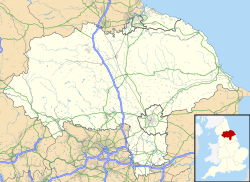| Kepwick | |
|---|---|
 Kepwick Village | |
Location within North Yorkshire | |
| OS grid reference | SE469909 |
| Unitary authority | |
| Ceremonial county | |
| Region | |
| Country | England |
| Sovereign state | United Kingdom |
| Post town | Thirsk |
| Postcode district | YO7 |
| Police | North Yorkshire |
| Fire | North Yorkshire |
| Ambulance | Yorkshire |
| UK Parliament | |

Kepwick is a village and civil parish in the county of North Yorkshire, England, on the North York Moors and near the A19. The population according to the 2011 Census was fewer than 100 and, whilst the details are included in the civil parish of Nether Silton, North Yorkshire County Council estimated the population to be about 90 in 2015. [1]
